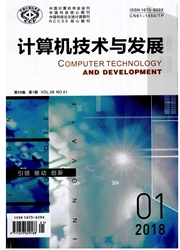

 中文摘要:
中文摘要:
综合地活跃的放射(FPAR ) 是的吸收相片的部分在许多植被生产率和生物资源评价的重要变量之一当模特儿。因此,为模型精确的改进精确地检索 FPAR 是重要的。根据地实验,这篇文章分析了在玉米华盖 FPAR 之间的关联并且光谱反射,和反射衍生物。关于与不同实验模型一起的 FPAR 评价的机制的讨论在玉米华盖反射,反射衍生物, NDVI (规范的差别植被索引) 和 RVI (比率植被索引) 之上被基于。可见乐队的反射比在红外线附近的乐队与 FPAR 显示出好一些的关联。在 FPAR 和反射衍生物之间的关联更经常并且极大地变化了与比在 FPAR 和反射之间,并且与仅仅在 520 附近的更好的关联, 570, 670, 805, 950,和 1010 nm。反射和反射衍生物两个都分别地在某典型单身的乐队与 FPAR 有亲密关联,与 0.791 和 0.882 的最大的 R2。简言之,反射衍生物和植被索引比反射,和逐步的回归在玉米 FPAR 的评价是有效的多,有反射衍生物的乐队与 0.944 的 R2 显示出最好的回归。在有走水路引起的吸收特征的 375 和 950 nm 的反射为精确估计模型建立的 FPAR 显示出巨大的潜力。总体上,植被索引和反射衍生物与 FPAR 有好关系,并且能被用于 FAPR 评价。它将为选择正确乐队并且挖掘是有效的亢奋光谱改进估计精确的 FPAR 的数据。
 英文摘要:
英文摘要:
Fraction of absorbed photosynthetically active radiation (FPAR) is one of the important variables in many vegetation productivity and biomass estimation models. Therefore, it is significant to retrieve FPAR accurately for the improvement of model precision. On the basis of the field experiment, this article analyzed the correlations between corn canopy FPAR and spectral reflectance, and reflectance derivative. Discussion about the mechanism of FPAR estimation with different empirical models is based upon corn canopy reflectance, reflectance derivative, NDVI (normalized difference vegetation index) and RVI (ratio vegetation index). The reflectance of visible bands showed much better correlations with FPAR than near-infrared bands. The correlation between FPAR and reflectance derivative varied more frequently and greatly than that between FPAR and reflectance, and with preferable correlation only around 520, 570, 670, 805, 950, and 1 010 nm. Reflectance and reflectance derivative both had intimate correlation with FPAR at some typical single band, with the maximum R^2 of 0.791 and 0.882, respectively. In a word, reflectance derivative and vegetation index were much effective in the estimation of corn FPAR than reflectance, and the stepwise regression of multibands with reflectance derivative showed the best regression with R^2 of 0.944. Reflectance at 375 and 950 nm with absorption characteristics caused by water showed prodigious potential for FPAR precisely estimating model establishment. On the whole, vegetation index and reflectance derivative had good relationships with FPAR, and could be used for FAPR estimation. It would be effective for choosing right bands and excavating the hyperspectral data to improve FPAR estimating precision.
 同期刊论文项目
同期刊论文项目
 同项目期刊论文
同项目期刊论文
 期刊信息
期刊信息
